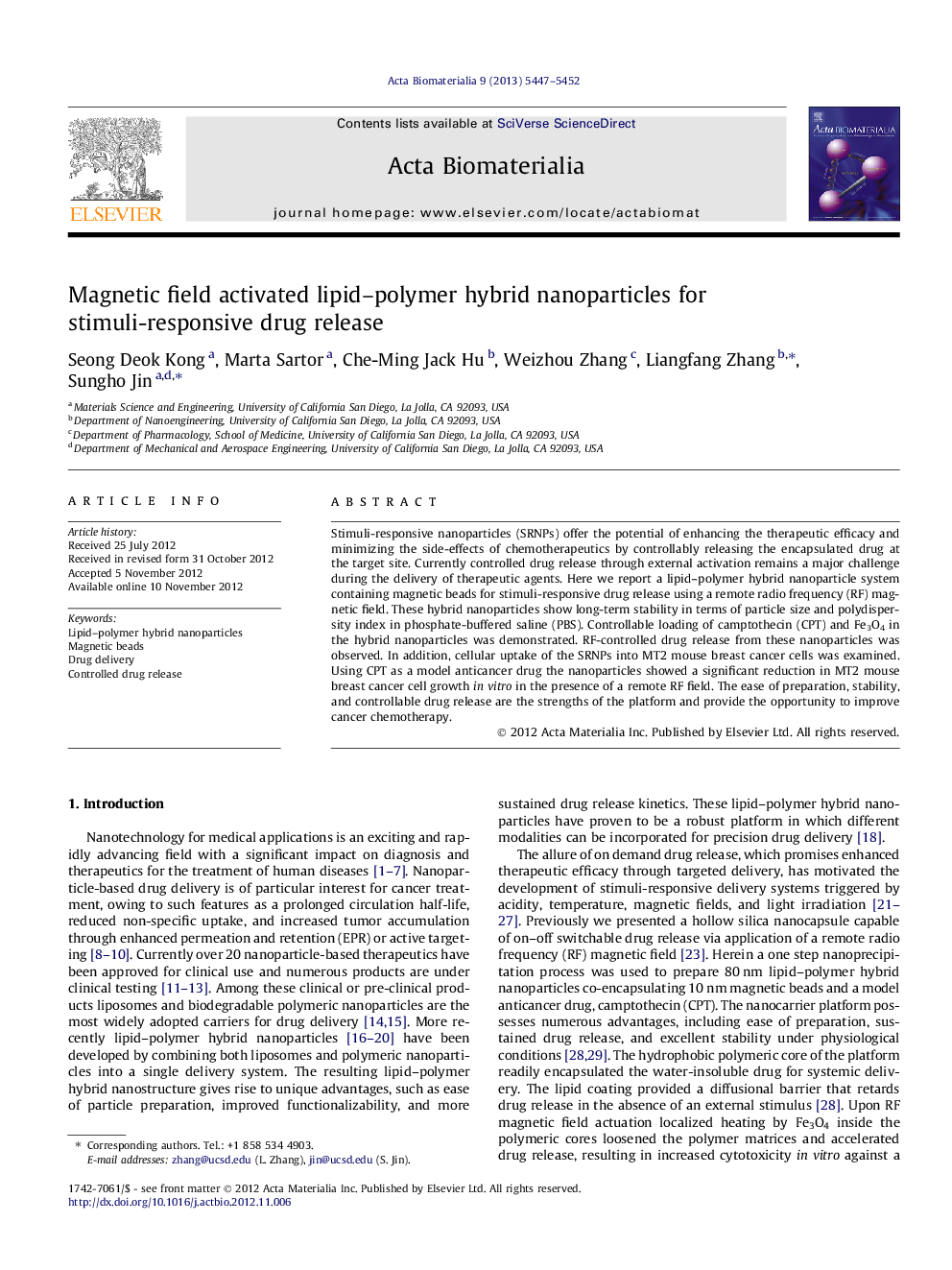| Article ID | Journal | Published Year | Pages | File Type |
|---|---|---|---|---|
| 10159973 | Acta Biomaterialia | 2013 | 6 Pages |
Abstract
Stimuli-responsive nanoparticles (SRNPs) offer the potential of enhancing the therapeutic efficacy and minimizing the side-effects of chemotherapeutics by controllably releasing the encapsulated drug at the target site. Currently controlled drug release through external activation remains a major challenge during the delivery of therapeutic agents. Here we report a lipid-polymer hybrid nanoparticle system containing magnetic beads for stimuli-responsive drug release using a remote radio frequency (RF) magnetic field. These hybrid nanoparticles show long-term stability in terms of particle size and polydispersity index in phosphate-buffered saline (PBS). Controllable loading of camptothecin (CPT) and Fe3O4 in the hybrid nanoparticles was demonstrated. RF-controlled drug release from these nanoparticles was observed. In addition, cellular uptake of the SRNPs into MT2 mouse breast cancer cells was examined. Using CPT as a model anticancer drug the nanoparticles showed a significant reduction in MT2 mouse breast cancer cell growth in vitro in the presence of a remote RF field. The ease of preparation, stability, and controllable drug release are the strengths of the platform and provide the opportunity to improve cancer chemotherapy.
Related Topics
Physical Sciences and Engineering
Chemical Engineering
Bioengineering
Authors
Seong Deok Kong, Marta Sartor, Che-Ming Jack Hu, Weizhou Zhang, Liangfang Zhang, Sungho Jin,
